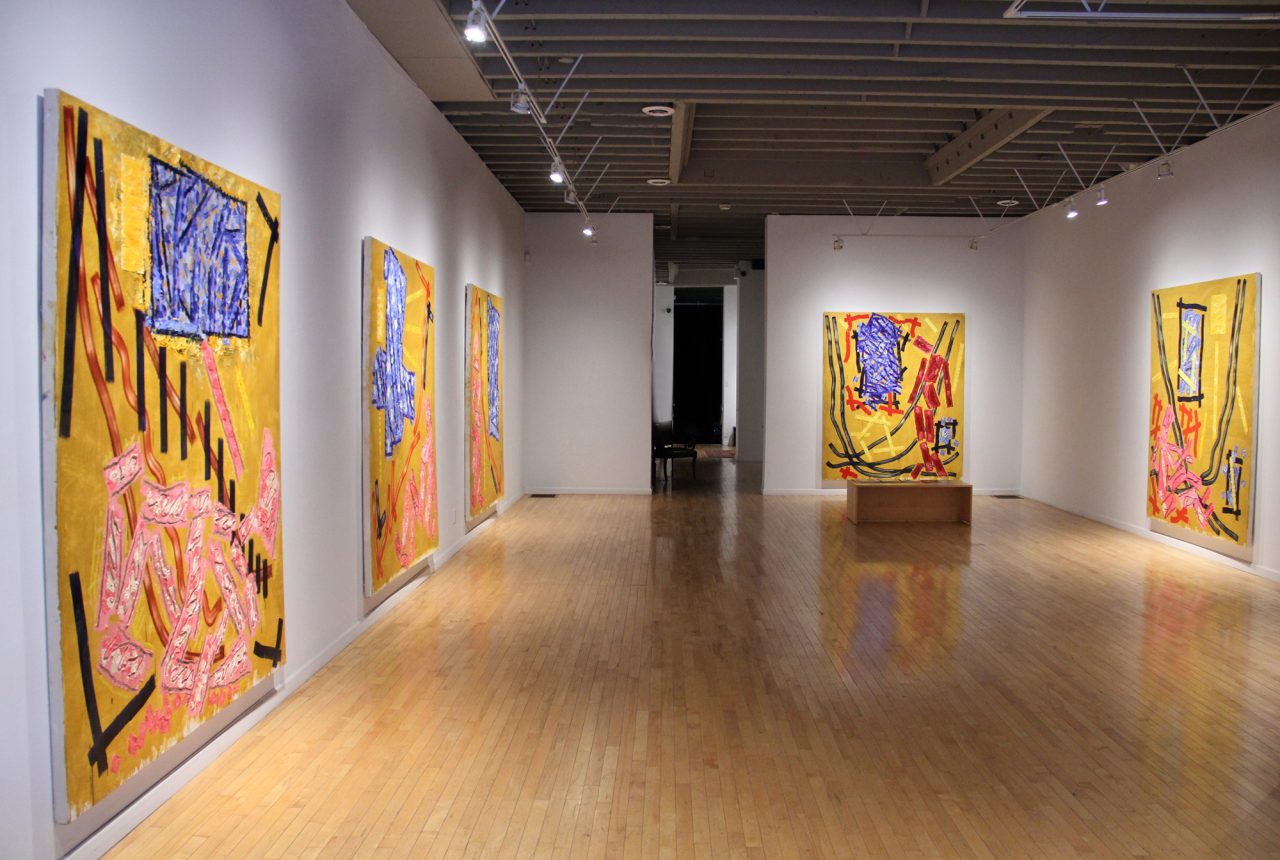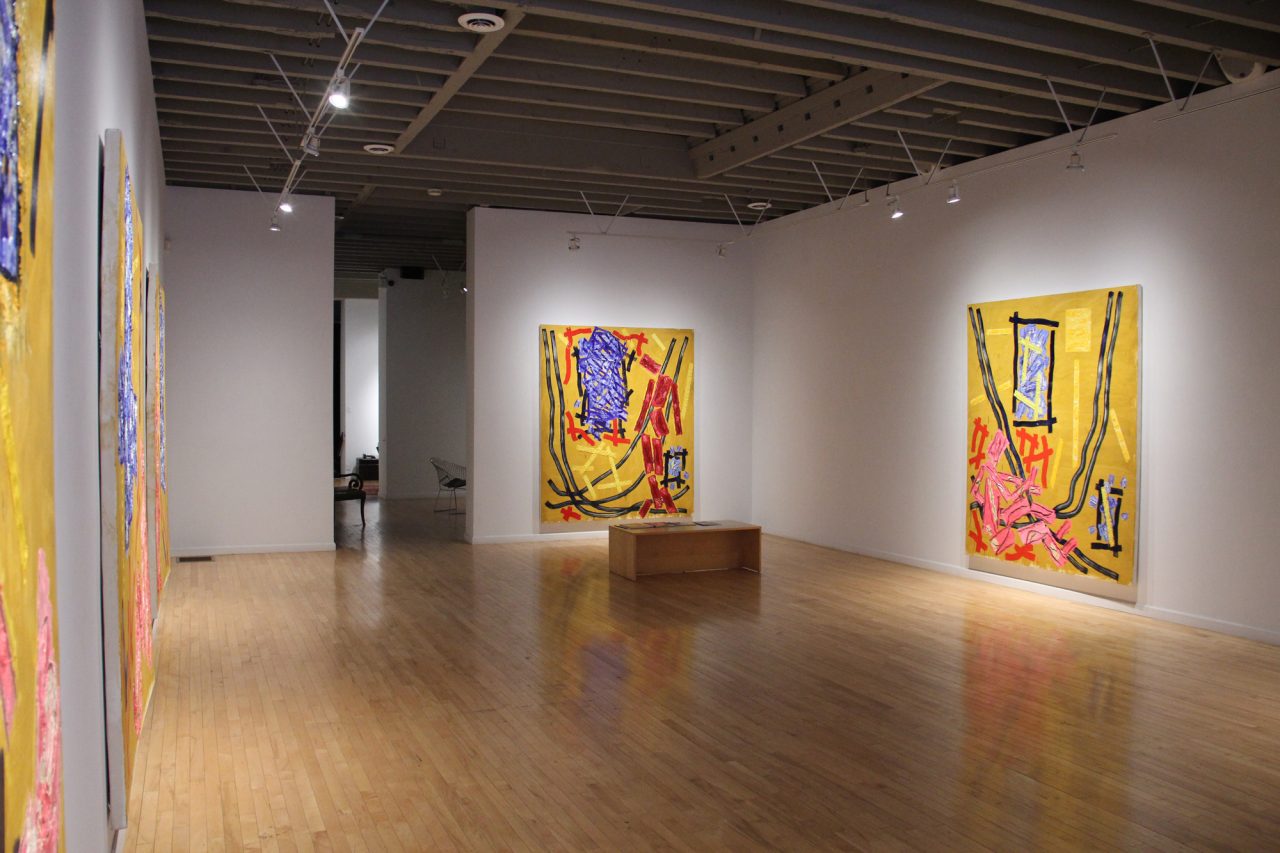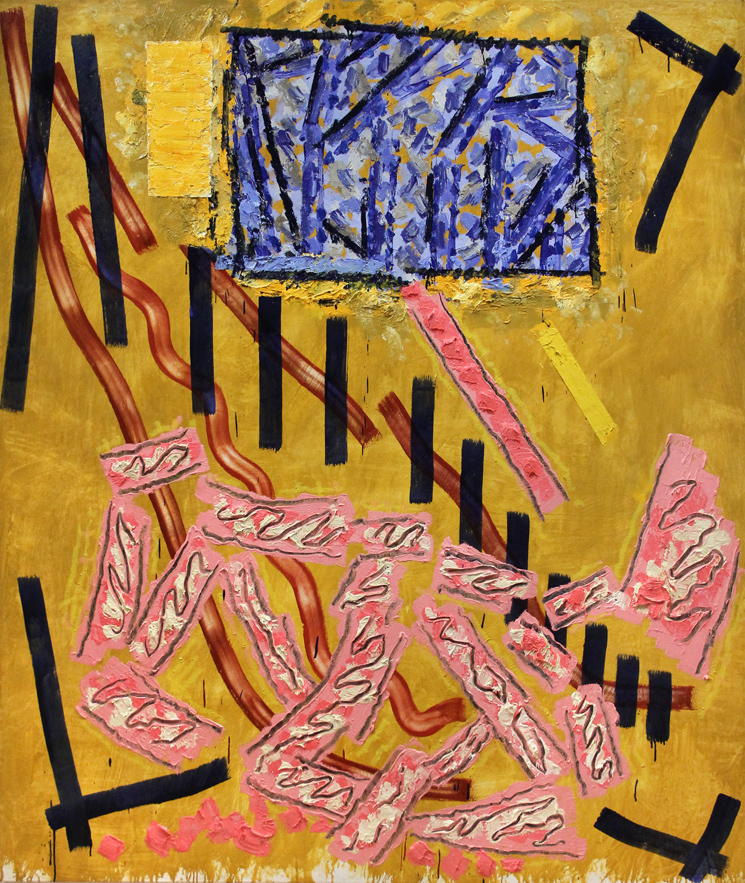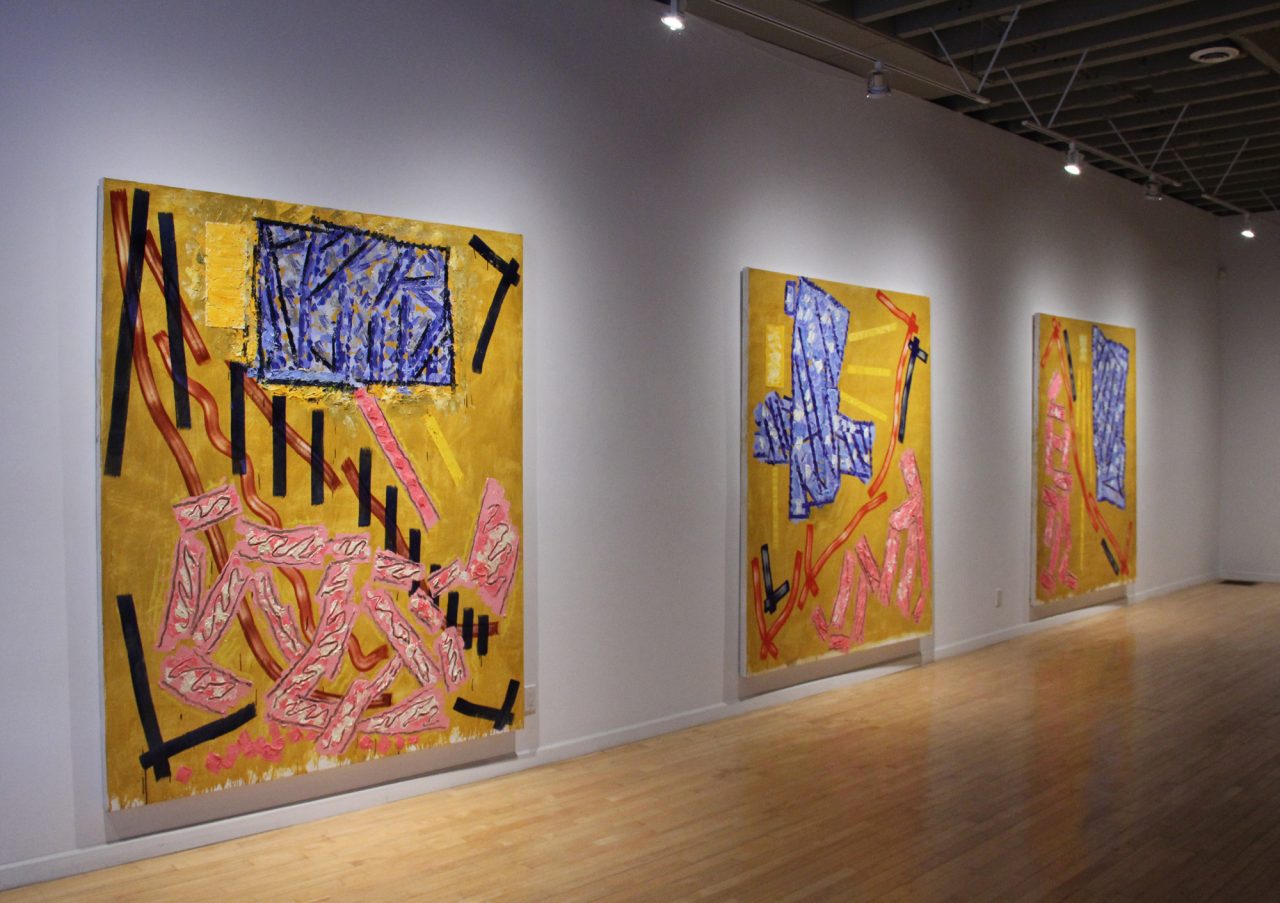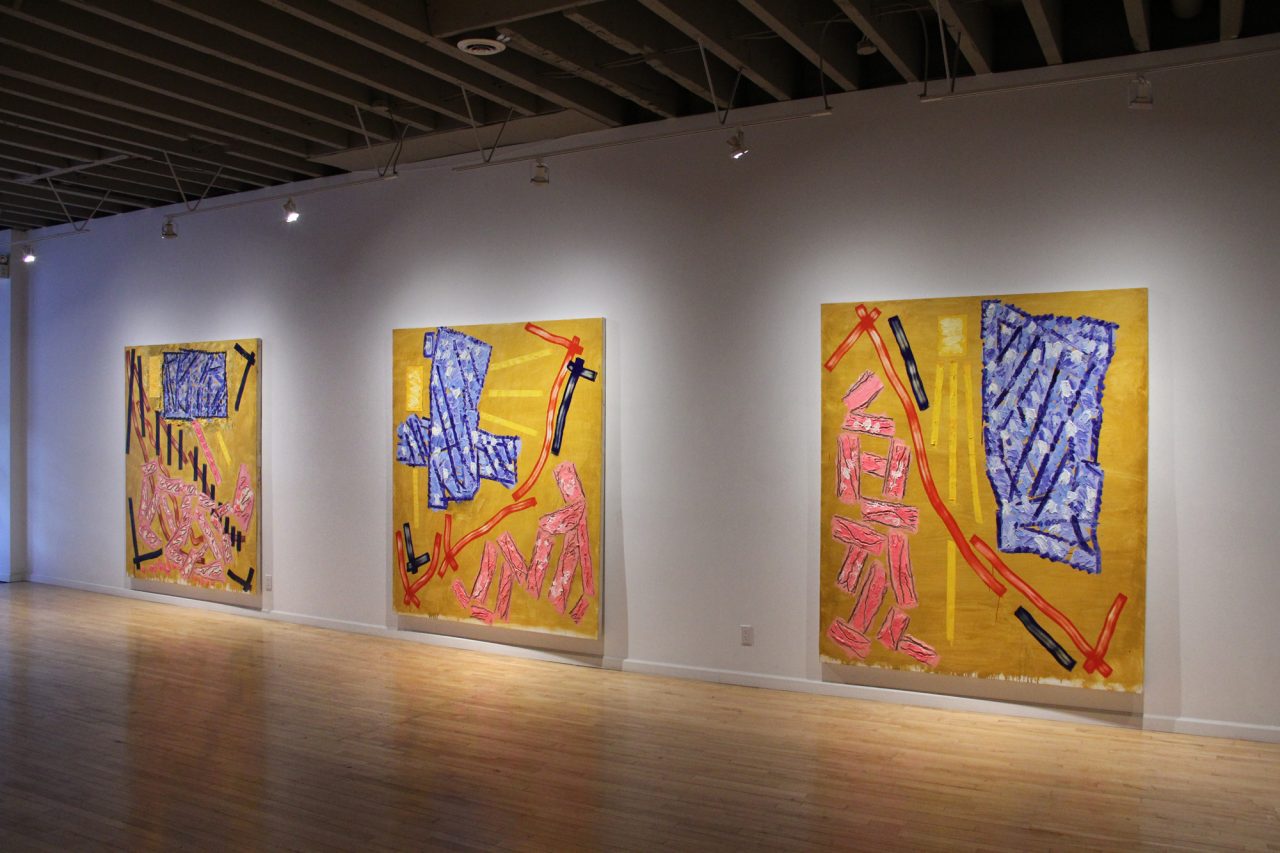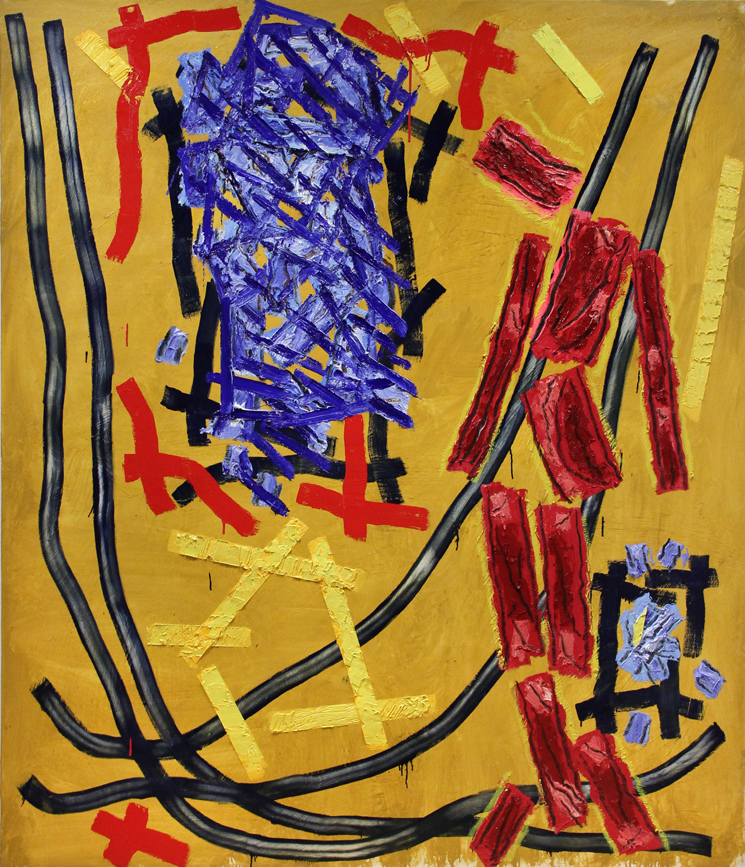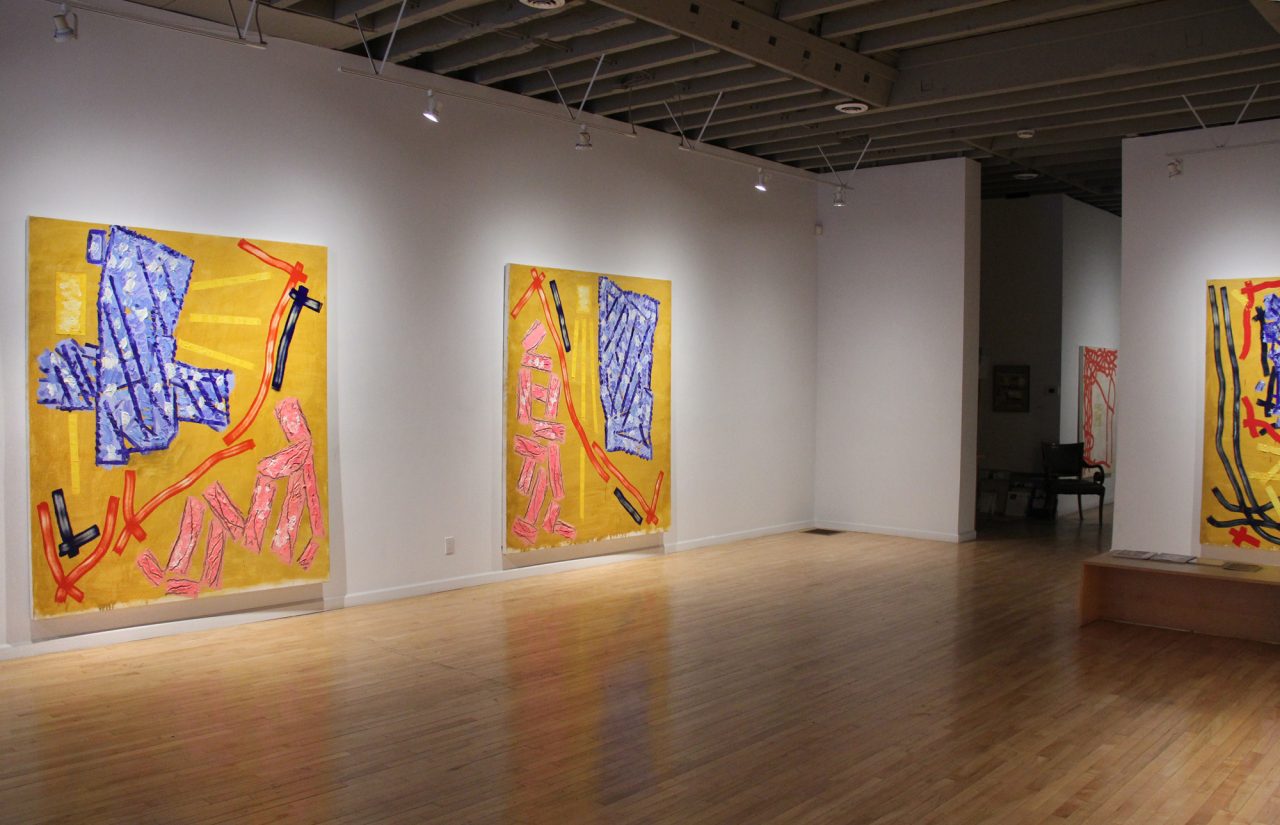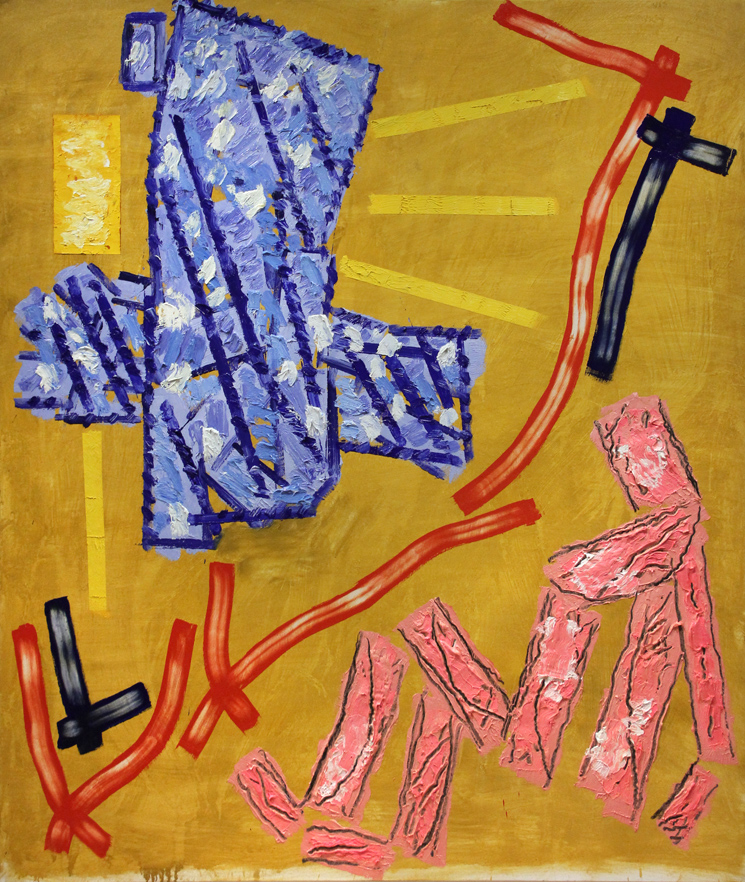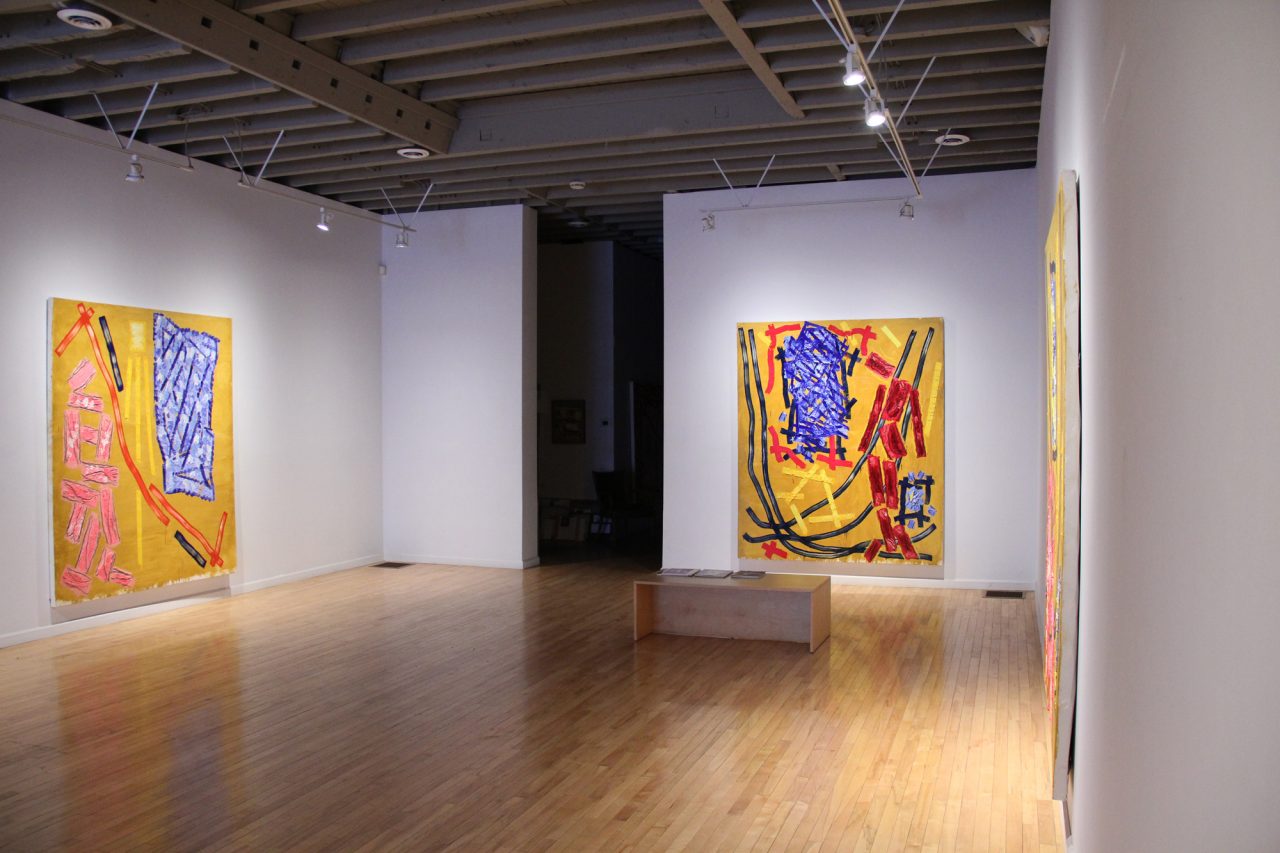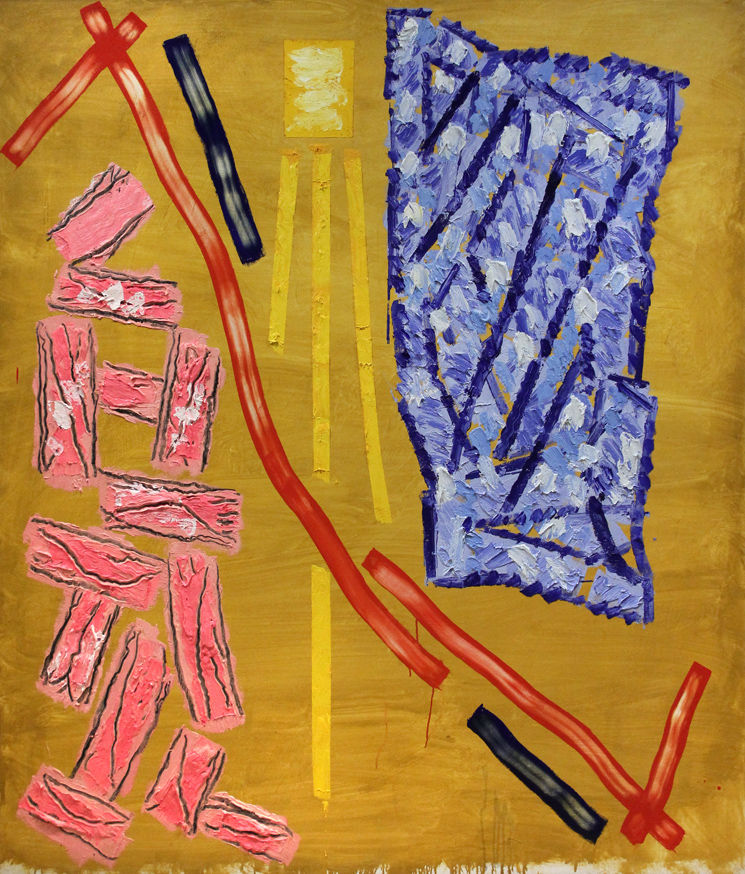David Urban
David Urban — October 1 – 29, 2016
Artist Will Gorlitz interviews David Urban about his new paintings:
Will Gorlitz: These paintings immediately look like your work, but there are some major differences. Can you talk about your decision to explore a new idea?
David Urban:
I didn’t set out to make a cohesive body of work or necessarily an exhibition that had similar traits between each painting. I did have this idea that I wanted to go back to some of my earliest work – the methodology and the way that I was working 20 years ago. But, I wanted to see what it would look like in my present state of mind.
This exhibition is time travel for me. It’s impossible in life, but somehow in an artistic language, you can go backwards in time and position yourself within these different languages and see how you think. The interesting thing for me was that I felt like I was inhabiting my 30-year old brain, but working with experiences that I’ve gained in the meantime. The paintings look quite different from my earlier work, even though there is a clear relationship with the imagery.
I found that when I did get back into the methodology, all of a sudden I found that there were all of these side roads and avenues that I couldn’t see 20 years ago. Now, they led me very naturally into places that are congruent with my current interest with the figure. My sense of surprise of finding out an avenue, which is entirely unbidden, was not something that I could have predicted.
Will Gorlitz: Your titles have always embraced poetry and literature. I see an emphasis of the figure and theatre or stage in these paintings. How did that develop and what it might represent?
David Urban:
I like the idea of the stage. I think referencing a stage is particularly apropos because these images have a set of props which I take and drag into a spotlight. I almost think of each image as a spotlit area where there is a dialogue between various elements. In that sense these paintings are perhaps more anecdotal than other paintings that I have made, and the titles lead into that.
Indicating the Grove – I liked the idea of finding a kind of paradisiacal landscape. I was thinking of Cezanne’s painting and finding an extension of space within nature. There’s a day at the beach in Bather in Reflection or Viewer of the Blue Abstraction features a person contemplating a painting. There’s a Man Carrying a Lantern or a man and a mirror. Living Room 1973 was inspired by the Jack Chambers painting “Sunday Morning #2” which features a kid watching the TV in the family living room. The painting morphs between a screen, an image, a pictogram of a painting or a mirror. It has a multi-valiant flexibility.
Will Gorlitz: The colour blue is really quite different in each painting.
David Urban:
I like to think that the colour blue has a different function in each painting. Almost like variations of a character. In Viewer of the Blue Abstraction it is almost like a window that’s illuminating the scene. In Living Room 1973 the smaller rectangle in the bottom right was originally what I thought of as a TV set and was an imaginative space where as a child you are both watching TV shows and living in a fantasy world at the same time. But it also becomes a painting within a painting. It establishes a dialogue within the image itself. It has its own set of rules.
Will Gorlitz: Are there elements that are completely abstract?
David Urban:
I always think of the elements in each painting as having a specific function. I would say that I am a figurative painter who paints right into the area of abstraction. But that does not make an abstract painting. I feel like these paintings really are narrative paintings. Even when I paint in a more minimalistic way, I’m always driving the paintings anecdotally or in terms of personal experience. That is what animates the desire to make the paintings. There’s always some specific moment, or phrase or experience.
Will Gorlitz: Colour is very prominent in your work. There is a graphic dimension to it and is very consistent. How do you use colour?
David Urban:
I’m often not attracted to the palette that I use, but I feel compelled again and again to explore certain relationships between these colours. For me this is like a philosophical problem because there is clearly something about a soft pink and a soft blue and ochre. There is a kind of vibration there that suggests for me liveliness and the potential for almost anything to happen within that space- like an illuminated space.
Pink also has that connotation. I’ve never used pink. I’ve never gone to that chromatic intensity. But I wanted the pink to almost exaggerate the relationships in these paintings and make a cartoon out of some of my earlier work. The idea of a cartoon, being the idea of like a hyper reality, enhanced the vision.
Maybe my current choice of colour has something to do with looking backwards, looking at the past. Of course I want the paintings to be formally beautiful. I love the idea that if there’s a drip it has to be exactly in the right place and should be meaningful in relation to the rest of the image.
It has been a short 10 years since we last exhibited the work of important Canadian painter David Urban. Our October exhibition features 5 new magnificent large-scale paintings.
Receiving immediate attention after he graduated with his Masters of Fine Art from the University of Guelph, Urban was quickly regarded as one of the leading Canadian painters of his generation. His signature “loops” combined with precise geometric shapes and bold mark-making, culminated in a 1995 Canadian Art magazine cover story written by the now late John Bentley Mays entitled, “Seven Paintings that Changed my Life”. As Gary Michael Dault wrote in 2002: “The paintings that Urban’s stellar reputation … rests are chromatically bright, spatially open paintings in which fields of colour were traversed by ribbons of alternative colour pushing through the paintings like highways on a map”.
Now, after more than 20 years, Urban has returned to his early roots, painting with incredible economy and composure, the five new paintings included in our exhibition. The paintings are a combination of his recent exploration of the figure and his history with abstraction. He makes not so subtle references to his iconic past (the loops and the tension in the paint) and explores again an openness and clarity through colour and form. Set up like a stage, each painting is its own narrative, a performance for our visual delight.
David Urban, born in Toronto in 1966, studied poetry and painting at York University, earning a BFA in 1989. Urban received a master’s degree in English literature and creative writing from the University of Windsor in 1991 (where he studied with Alistair MacLeod) and a second master’s degree in painting from the University of Guelph in 1994.
His work is in numerous private and public collections including the National Gallery of Canada, Musée des Beaux Arts, Montreal, and the Art Gallery of Ontario. In 2012, Urban joined Queen’s University as the Koerner Artist-in-Residence, an annual professional residency in the Fine Art Program. Recently, a monumental 10 x 24 foot canvas was acquired for the lobby of the Mies van der Rohe designed TD Centre Tower in downtown Toronto.
The art practice of David Urban is defined by bold collisions of line and shape, clashing tones and kinetic brushstrokes. Urban reflects on music, childhood and the primacy of the imagination, becoming a summation of thematic ideas pursued in his paintings. He is deeply implicated in the history and methodology of paint. Urban is a poet and a musician, playing several instruments and investigating the physical presence of sound. His work explores the interplay between representation and abstraction, while maintaining a strong sense of connectivity and rhythmical structure. He integrates both real and abstract elements, simultaneously presenting two disparate threads of modern painting.
